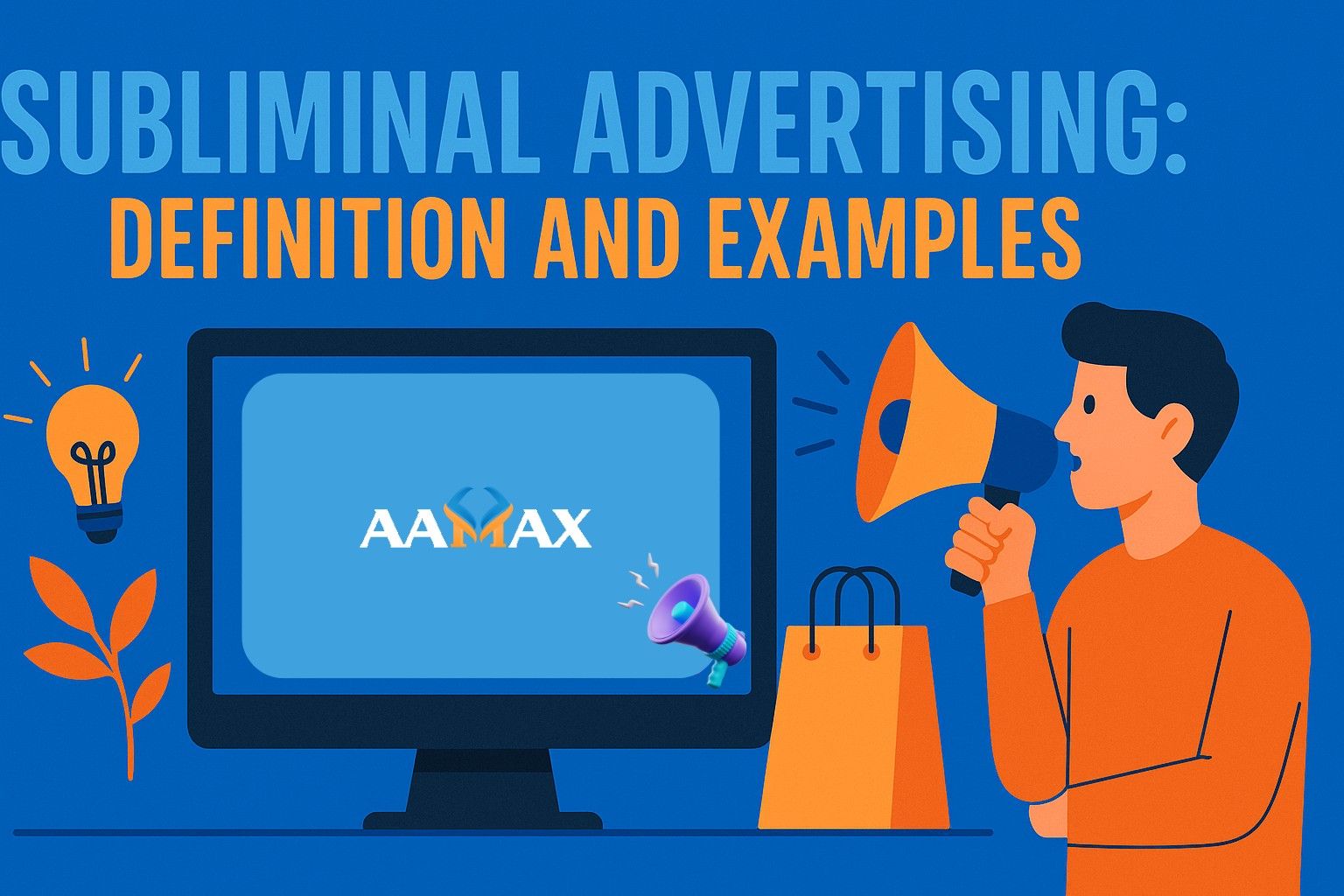
Subliminal Advertising: Definition and Examples
Subliminal advertising has long been a controversial and intriguing concept in the marketing world. The idea that a brand could influence consumers without them consciously noticing sounds almost like science fiction. However, there’s plenty of evidence and debate around whether subliminal messaging truly works and how it has evolved over time.
In this in-depth guide, we will explore what subliminal advertising really is, how it works, historical examples, its legal implications, and whether it's still relevant in today's digital marketing landscape.
What is Subliminal Advertising?
Subliminal advertising refers to the use of stimuli—such as images, sounds, or words—inserted into media to influence viewers' thoughts, feelings, or actions without their conscious awareness. These messages are typically too brief or subtle for the viewer to notice consciously but may register subconsciously.
For example, a single frame in a video that flashes a word like "Buy" or an image of a product could be a subliminal message. The goal is to create subconscious associations or triggers that influence behavior.
The Psychology Behind Subliminal Messaging
The concept of subliminal messages stems from psychological theories related to perception and cognition. The human brain processes information at both conscious and unconscious levels. Subliminal messages aim to target the subconscious part of the brain, affecting decisions and attitudes without overt awareness.
One psychological principle often cited is priming, where exposure to one stimulus influences the response to another. For instance, seeing the color red might subconsciously make someone think of passion or urgency, potentially making a product seem more exciting.
A Brief History of Subliminal Advertising
The notion of subliminal messaging in advertising became popular in the 1950s. A marketing researcher named James Vicary claimed that he increased popcorn and soda sales by flashing the phrases “Eat Popcorn” and “Drink Coca-Cola” during a movie—messages that appeared for only a fraction of a second.
While Vicary later admitted to fabricating the results, the concept took root in public consciousness. Since then, subliminal advertising has been used in various forms—from print and broadcast media to digital platforms.
Notable Historical Examples
1. Coca-Cola and Popcorn (1957)
Vicary’s infamous movie theater experiment, despite being discredited, is often cited as the origin of subliminal advertising.
2. Marlboro’s Barcode Sponsorship
In the early 2000s, Formula 1 team Ferrari used a barcode design that subtly resembled the Marlboro cigarette logo, allowing the brand to maintain a presence despite strict advertising regulations.
3. Disney Movies
Some critics claim that classic Disney films like The Lion King and The Little Mermaid contain subliminal images or messages—though these claims are mostly speculative and unproven.
4. FedEx Logo
While not strictly subliminal advertising, the hidden arrow in the FedEx logo is a clever use of negative space that subtly reinforces the idea of speed and direction.
Subliminal Techniques Used in Advertising
While traditional subliminal ads are rare today (and often banned), certain psychological tactics still walk the line between subtle persuasion and subliminal influence:
1. Backmasking
Playing audio messages in reverse, a technique often used in music and advertisements to insert hidden messages.
2. Visual Embeds
Hiding shapes, words, or symbols in imagery to evoke certain emotions or responses.
3. Speedy Frame Insertion
Inserting a single frame in a video with a message or image that flashes so quickly it goes unnoticed consciously.
4. Emotional Triggers
Using subtle visual or audio cues that evoke strong feelings such as trust, fear, or excitement without direct explanation.
Is Subliminal Advertising Legal?
In many parts of the world, subliminal advertising is restricted or outright banned.
- United States: The FCC prohibits subliminal techniques on broadcast media, considering them deceptive.
- United Kingdom: The Broadcasting Authority forbids any attempt to transmit messages below the threshold of conscious perception.
- Australia: Subliminal advertising is considered unethical and prohibited in all forms of media.
Despite these restrictions, proving the presence and influence of subliminal ads remains a legal and technical challenge.
Ethical Considerations
Subliminal advertising walks a fine ethical line. While it may not always be illegal, using it can undermine consumer trust and violate the principles of transparency and informed consent.
Many marketers today focus instead on neuromarketing, which uses brain science to understand how consumers think and feel—without crossing ethical boundaries.
Subliminal Messaging in the Digital Age
With the rise of digital media and advanced tracking tools, the nature of subliminal advertising has shifted. Today, marketers use subtle psychological nudges rather than traditional subliminal methods.
Some modern equivalents include:
Personalized Ads
Dynamic ads that change based on your browsing behavior, subtly reinforcing your preferences without direct input.
Color Psychology
Brands use color schemes designed to evoke specific emotions and associations subconsciously.
Micro-Targeting on Social Media
Algorithms show users content they are more likely to agree with or engage with, reinforcing behaviors without explicit messaging.
Influencer Marketing
Audiences are often unaware of the persuasive intent behind influencer promotions, making these messages functionally subliminal.
Does Subliminal Advertising Actually Work?
This is the million-dollar question—and the answer is nuanced.
Supporting Studies
Some research supports the idea that subliminal cues can influence preferences and behavior, but typically only in very specific, short-term contexts. For example, a 2006 study published in Science found that subliminal messages could influence people’s choices when they were already inclined to make a decision (e.g., drinking a brand they already liked).
Criticism and Limitations
Other studies argue that the effects of subliminal messaging are minimal or inconsistent. The complexity of human decision-making, especially in purchasing behavior, makes it difficult to isolate subliminal influence.
Should Businesses Use Subliminal Techniques?
While the idea is enticing, subliminal advertising is largely ineffective, legally risky, and ethically questionable. Businesses are better served by focusing on transparent, value-driven strategies that build trust and deliver measurable results.
That includes:
- Creating emotionally resonant content
- Using clear calls-to-action
- Engaging in authentic storytelling
- Delivering real value through content marketing
A Better Alternative: Strategic Digital Marketing
Instead of relying on questionable subliminal techniques, brands can use proven digital marketing strategies to drive engagement and conversions.
Consider partnering with a professional digital marketing agency like AAMAX for expert solutions. AAMAX is a full-service digital marketing company offering Web Development, Digital Marketing, and SEO services tailored to help your business grow ethically and effectively.
Final Thoughts
Subliminal advertising is a fascinating part of marketing history, but its actual impact is still up for debate. While it has been used in creative ways over the years, modern marketing practices have largely moved on to more transparent and data-driven approaches.
Instead of trying to influence customers without their awareness, today’s successful brands focus on building trust, delivering value, and using ethical persuasion techniques. It’s not about tricking the brain—it’s about earning attention and loyalty the right way.







